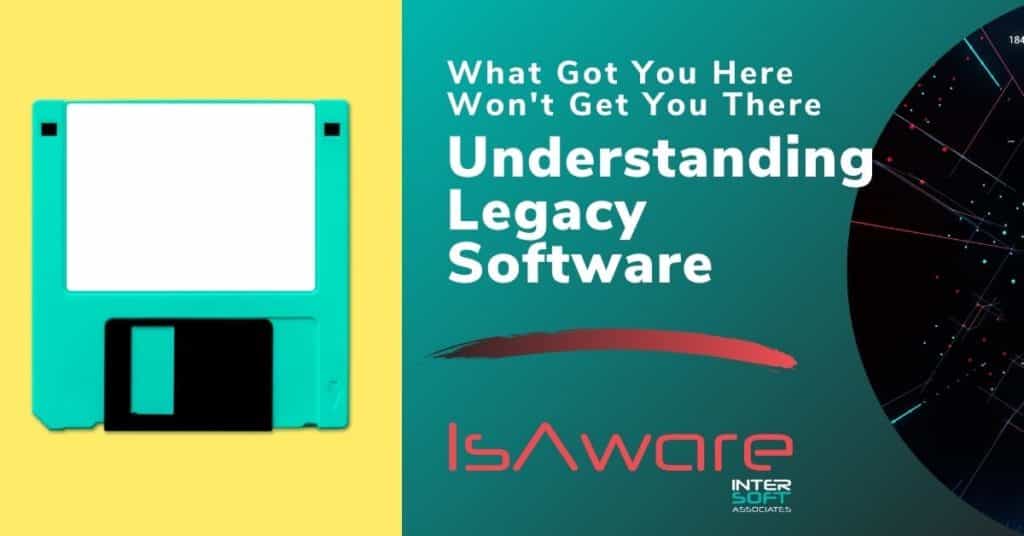As technology continues to evolve, business practices must accompany the shift. When a business is thriving and expanding or hopes to gain that competitive advantage over others, it is essential to bridge the gap between the growth of your organization and an outdated technology system.
There are numerous problems related to the use of legacy software including the lack of efficiency and effectiveness. This article intends to break down precisely what legacy systems are, the disadvantages of continuing to use older software models, and how to make small investments that pay off big in the long run for your business.
Please continue reading for more suggestions on upgrading your company’s software and making business-critical decisions that will impact the future.
What Is Legacy Software?
Legacy software is any software that is still in use because it satisfies a particular business need, even though there are more technologically advanced standards in place.
Usually, legacy software is directly tied to a specific version of a hardware model or operating system that is “end-of-life.” This means that various software vendors are no longer willing to support a particular product or version, intending to focus on newer versions and products.
What Is Meant by Legacy System?
Expounding on this, a legacy system uses both the legacy software and the hardware together. A legacy system may also refer to outdated application software or programming languages. This outdated computer system is linked to a specific mission that the company has, but it doesn’t truly allow for growth because it is slowly but surely being phased out.
The legacy system always uses older technology, which prevents it from interacting with newer designs due to compatibility issues and limits the features that are available to you.
The types of institutions that are still using legacy systems are everywhere. You can find the software, hardware, or both in banks, manufacturing companies, transportation services, energy companies, insurance companies, and even hospitals.
Legacy Systems Examples (Types)
Here are some common examples of legacy software programs currently being used. These programs cause numerous problems for companies, such as space and memory issues and slow performance. The most important impact of legacy software are security vulnerabilities.
Software:
- Windows XP
- IBM
- Java (6,7)
- Nitro Pro
- WinZip
- GOM Media Player
- Flash Player (Active X)
- DivX
- Foxit Reader
- Adobe Shockwave Player
- Internet Explorer 11 and older versions
Businesses should replace their input and output devices, primary and secondary storage devices, and processors with regularity. Ideally, this would be about every five years to keep up with evolving systems.
Let’s look at Tax Day 2018 as an example. Due to technical problems, the IRS wasn’t able to process almost 5 million electronically-filed tax returns. Many of their IT systems were outdated, some as many as 60 years old, which likely contributed to the computer glitch.
What Are Some Problems With Legacy Systems?
Many disadvantages come with the continued use of software and hardware that should be exchanged for better technology. We’ll go through the significant problems plaguing many companies that aren’t adapting to the new available systems.
Legacy System and Security
Legacy systems struggle to handle security threats because of their age and incompatibility with new systems. Therefore, there’s always an issue of data security because companies only make changes when absolutely necessary to address the most recent threat. These vulnerabilities aren’t always easy to fix because of the inflexibility of older software and hardware.
Hard to Meet Client Demands
Businesses that rely on client interaction may face communication problems because they do not have the latest applications and features on their devices. If your outdated system is unable to install or enable various updates and options, how will your company continue to rise to the occasion of consumer demand and preference?
Legacy Systems Aren’t Cost-Effective
It would seem as though never changing your software and hardware would be less expensive than continually upgrading, but that’s becoming increasingly false. The updates and support for the older models of equipment and their systems typically cost a lot more than the support for current models. This price increase stems from the additional work developers must conduct in order to continue to offer maintenance on these legacy applications.
Plus, businesses must consider unexpected hardware crashes and outages that cost them a lot of money in the end.
Legacy Systems Cause Wasted Energy
Aside from making computers more powerful and faster, technological advancements also affect efficiency. When you have old software and hardware systems, your data center is operating at an optimal level. Over time, hardware becomes less and less efficient as it ages. Additionally, the current power reduction technologies that have come into play save companies a lot of money on their energy expenses.
Software Doesn’t Meet Minimum Requirements
When a company chooses to purchase new software, using outdated hardware systems may not meet the new software’s minimum requirements. Even when the software can be installed, severe functionality problems keep the software from operating at maximum performance.
Why Are Legacy Systems Still Being Used?
Legacy systems are still being used today mainly because of reliability and familiarity.
Companies have invested in the software and don’t want to spend money on a rewrite or to replace hardware completely. This leads to operational complacency and ultimately, will hurt the business as time progresses. Business processes won’t flow optimally, leading to a loss in revenue and more money spent once the system completely fails.
Legacy Systems Modernization Approaches
Legacy modernization approaches are specific techniques used to update and upgrade obsolete technologies.
Here are the most popular examples that we can assist you with at InterSoft Associates:
Encapsulation: Allows businesses to reuse some components of their legacy software. The code remains intact with a new interface provided.
Rehosting: Costing the least and involving the least risk, this approach entails moving a particular application, in its current state to a cloud, virtual, or physical infrastructure.
Replatforming: This method requires upgraded versions to adjust to the codes from a newer platform while attempting to preserve the functionality that already exists.
Code Refactoring: This modernization strategy involves optimizing and restructuring existing codes with no added changes to external behavior. This solves technology problems and also improves the technological features of a particular software application.
Rebuilding: This approach implements the rewriting of individual application components while simultaneously retaining the specifications and scope of the software.
Replacement: This means completely replacing a system’s software and hardware instead of altering it to meet advanced technology demands.
Final Thoughts
As your business grows and your needs change, you’ll want the capability to embrace new opportunities. Now is the optimum time to replace your legacy systems with affordable software developed by a reputable company that will be flexible and will meet your needs as your business continues to grow.






